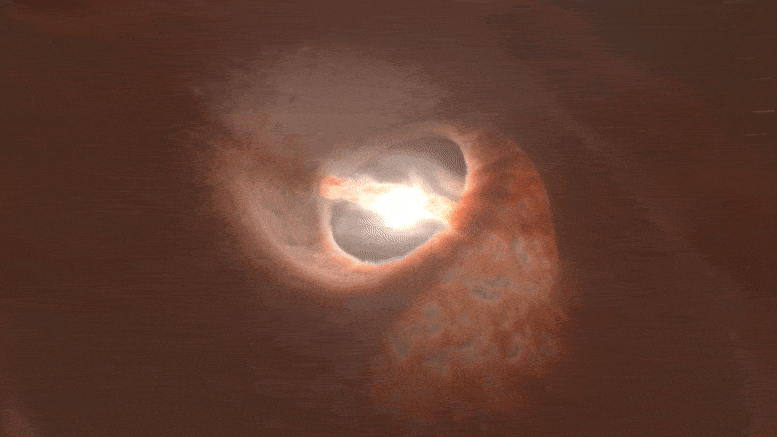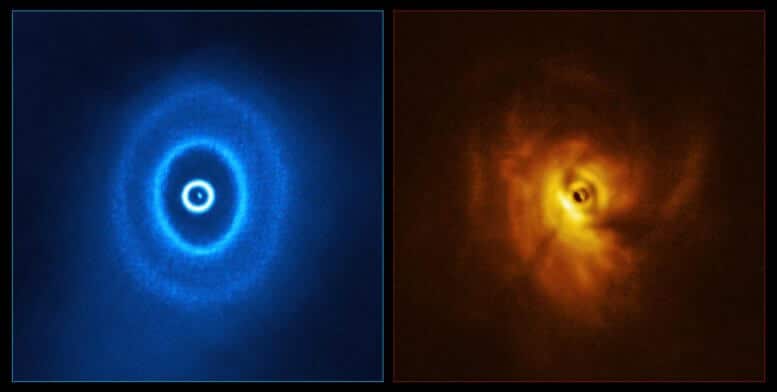The potential discovery of a planet with a triangular coffee orbit has implications that strengthen our understanding of how planets form

In a distant star system - just 1,300 light-years from Earth - researchers from the University of Nevada, Las Vegas (UNLV) and colleagues have identified what may be the first planet to orbit three stars.
Unlike our own solar system, which consists of a single star, scientists believe that half of all star systems, such as GW Ori where the astronomers observed the new phenomenon, contain two or more stars that are gravitationally bound together.
But no planet moving in an orbit around three stars - the triple orbit of coffee - has ever been discovered. Until now, maybe.

Using observations from the Atacama Large Millimeter/Submillimeter Array (ALMA), astronomers from UNLV analyzed the three rings of dust observed around the three stars, which are essential for planet formation.
But they found a large and incomprehensible profit in the triple lap track disc.
The research team investigated various sources, including the possibility that the gap was created by a gravitational torque from the three stars. But after building a comprehensive model of GW Ori, they found that the more likely and more fascinating explanation for the void in the disc is the presence of one or more massive Jupiter-like planets. Gas giants, according to lead author Jeremy Smallwood who recently received a doctorate in astronomy from UNLV, are typically the first planets to form in a star system. Terrestrial planets such as Earth and Mars follow.
The planet itself cannot be seen, but the discovery—highlighted in a September study in the Monthly Notices of the Royal Astronomical Society—suggests that it is the first triple-orbit planet ever discovered. Additional observations from the ALMA telescope that are expected in the coming months will be able to provide direct evidence of the phenomenon.
"It's really exciting because it really strengthens the theory of planet formation," Smallwood said. "It could mean that planet formation is much more active than we thought, which is pretty cool."
to the notice of the researchers
More of the topic in Hayadan:

5 תגובות
You cannot write: in a distant star system. And then after that only 1200 light years.
Far and near contradict each other.
Maybe they discovered what it was.
Did they find out or not?
Wow cut it short!
It's simply fascinating and wonderful... While developing the research methods, other things are discovered that bring enormous benefit to humanity...
This is a first discovery because the conventional technique for discovering planets (the point blocking of the light emanating from the star in the background) is not applicable in a moving background of several stars that create complex fluctuations in the intensity of the light reaching the telescopes. Just as it was once believed that meteors are a rare phenomenon, because the technology has not yet developed to discover these changes, which are now discovered in almost every system that is examined with due care, so it is also possible to believe that in the near future such news will be considered as historical news, not a reason for a headline.